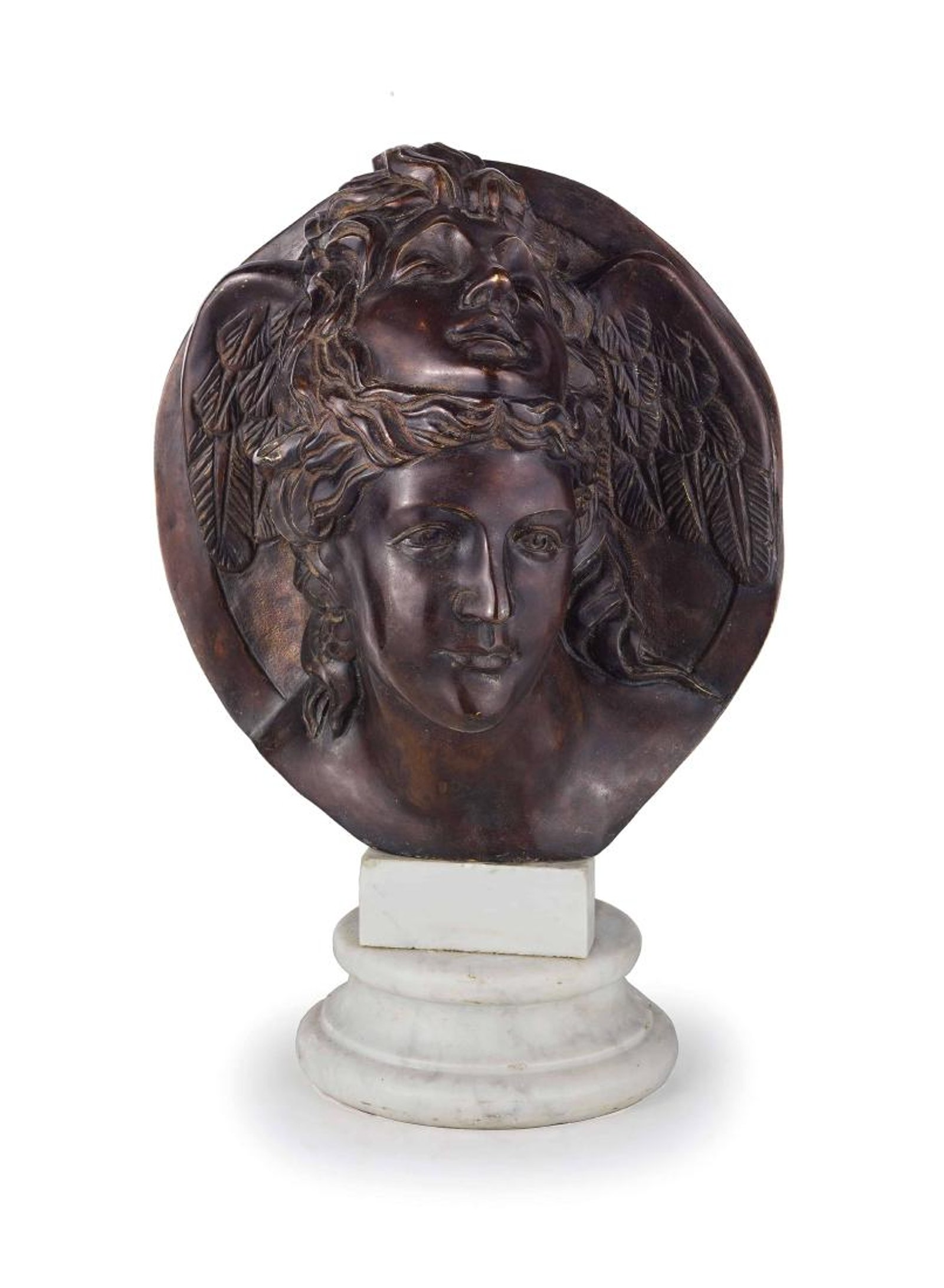

Now blessings light on him that first invented this same sleep: it covers a man all over, thoughts and all, like a cloak it is meat for the hungry, drink for the thirsty, heat for the cold, and cold for the hot.
Bronze head of hypnos free#
Sancho: "… but this I very well know, that while I am asleep, I feel neither hope nor despair I am free from pain and insensible of glory. (Miguel de Cervantes, Don Quijote de la Mancha, Segunda Parte, Capítulo LXVIII). Sola una cosa tiene mala el sueño según he oído decir, y es que se parece a la muerte, pues de un dormido a un muerto hay muy poca diferencia."

Sancho: "…sólo entiendo que en tanto que duermo, ni tengo temor, ni esperanza, ni trabajo, ni gloria y bien haya el que inventó el sueño, capa que cubre todos los humanos pensamientos, manjar que quita la hambre, agua que ahuyenta la sed, fuego que calienta el frío, frío que templa el ardor, y, finalmente, moneda general con que todas las cosas se compran, balanza y peso que iguala al pastor con el rey y al simple con el discreto. On my grave, as now my bed." (Sir Thomas Browne 1605-82, Religio Medici II.12). "O Sleep, rest of all things, mildest of the gods, balm of the soul …" ( Iris 1 to Hypnos. "Divine Sleep, god who knows no pain, Sleep, stranger to anguish, come in favor to us, come happy, and giving happiness, great King! … come with power to heal!" (Sailors of Neoptolemus' crew.

"What presumption of man, can match your power, Zeus, who are no subject to Sleep or Time or Age, living forever in bright Olympus?" (Theban Elders. "… almighty Sleep releases the fettered sleeper, and does not hold him in a perpetual grasp." ( Ajax 1.
Bronze head of hypnos series#
This head shows how wings sprouted from his temples, and his hair was elaborately arranged into a series of luxurious locks, some falling freely, others tied in a knot at the back of the head."… whenever in his imagination a man sees delights, straightaway the vision, slipping through his arms, is gone, winging its flight along the paths of Sleep." (Argive Elders. He was shown running forwards, holding poppies in his right hand and a drinking-horn in his left, from which presumably he poured a sleeping potion.

The statue type represented Hypnos either as an adolescent or, in some variants, as an even younger child. This bronze head belongs with a series of similar heads and figures found mostly in the western Mediterranean, particularly in France, Italy and Spain. His son was Morpheus, the personification of dreams.Īlthough he was frequently shown in vase painting, sculptural representations of Hypnos were rare. Hypnos' wings allowed him to move swiftly over land and sea, and to fan the foreheads of the weary until they fell asleep. The god was frequently mentioned in literary sources, and associated with poppies and sleep-inducing herbs. Hypnos was, however, generally viewed as benevolent to mankind. Hypnos first appears in mythology in the works of one of the earliest Greek poets, Hesiod (lived around 700 BC), where Hypnos (Sleep) and Thanatos (Death) were the terrible sons of Nyx (Night).


 0 kommentar(er)
0 kommentar(er)
